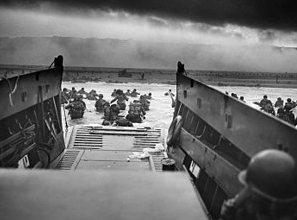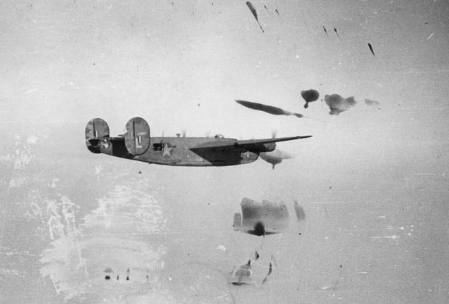D-Day and Midway

I was sitting with Admiral Mac nearly a decade ago at the Willow Bar. Life was good. We were all alive.
It was the night on the eve of the Battle of Midway, the Navy’s greatest triumph. I was embarrassed the significance of the date did not come up, and that was sort of strange, since the Admiral is one of the last people alive who contributed to the victory.
Nor did I remember the anniversary until someone mentioned how nice it was to see some Navy guys decked out in their whites. That was my favorite uniform, the open-necked white shirt with epaulettes and absurd white trousers, socks and shoes.
There was something dashing about it, the flash of color of the ribbons on the left breast of the shirt, and the coolness of the fabric against the warmth and humidity of the early summer Washington season.
Someone said that there must have been a ceremony to commemorate the 4th of June, 1942, the climatic battle in which the United States Navy decisively defeated thee Imperial Japanese Navy’s attack against Midway Atoll. It was a victory of strategic impact, since the Japanese had intended to eliminate the United States as a strategic power in the Pacific.
Victory at Midway would have achieved a dual purpose: the elimination of American carrier-based airpower and the establishment of a new outer security perimeter for the Greater East Asia Co-Prosperity Sphere. IJN strategists considered the real possibility that Washington would capitulate in the Pacific.
Fiji and Samoa would have been next, and the Aleutians.
The operational plan was pretty good, but wrong on so many other levels that it is hard to believe. People like the Admiral managed to break the IJN’s JN-25 code, and through the legendary disinformation about the status of Midway island divined the real objective of a multi-pronged attack.
The courage of one of the greatest of Americans, Admiral Chester Nimitz, to place his trust in the veracity of what his Spooks told him and place the scarce remaining ships and aircraft in harm’s way enabled the U.S. Navy to set up an ambush of its own. Four Japanese aircraft carriers and a heavy cruiser were sunk in exchange for one American aircraft carrier and a destroyer.
From that moment forward, the Japanese were on their way backward. The battle continued in the chaos of long-range combat for another three days, until the 7th of June, when the struggle officially went into the record books.
It was not for another two years that the 6th of June provided the same symbolic date in the struggle against the Nazis. So, on this peaceful moment in Arlington, I ask you to remember what was given, and what was taken by those young people on the sea, on the beaches, and in the air.
The Allied invasion of Normandy consisted of Operation Neptune and Operation Overlord commenced shortly after midnight on Tuesday, 6 June 1944, with the insertion of 24,000 American, Canadian, British and Free French airborne forces. Many of those kids were dead by the time the assault on the famous Utah, Omaha, Gold, Sword and Juno beaches began at 6:30 AM British Double Summer Time.
It was the largest amphibious invasion of all time, with over 160,000 troops in the landing force and another 195,700 Allied and merchant navy personnel in over 5,000 ships and landing craft.

Uncle Dick would have been airborne from his base in East Anglia by then in his B-24, one engine failing on take off and barely able to lurch into the air with his load of bombs. Dick would normally have aborted the mission, since without all four thundering Pratt and Whitney engines his bomber could not keep up with the formation.
“Screw it,” Dick told his crew on the intercom. “It’s D-day. We are going.”
It is worth remembering what they gave that day, and what those young people confronted afterwards in the hedgerows on the long walk to the Rhine that followed, don’t you think?
Copyright 2019 Vic Socotra
www.vicsocotra.com
